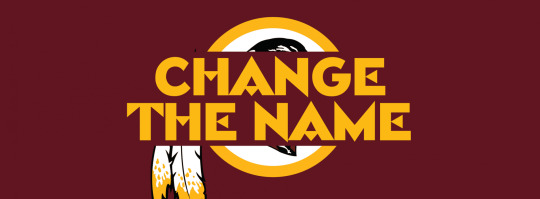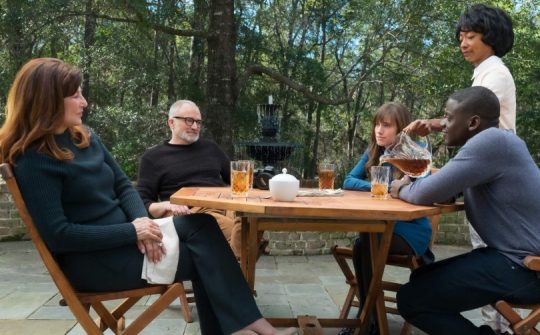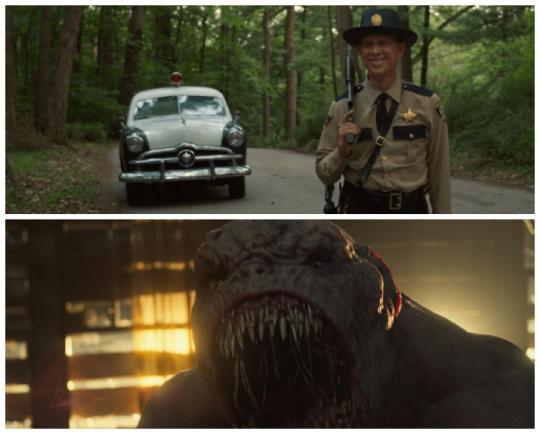Don't wanna be here? Send us removal request.
Text
Twitter - @_IllumiNatives

My social media selection was a twitter page called IllumiNative, which is a page created and led by Native peoples. IllumiNative is a new nonprofit initiative designed to increase the visibility of – and challenge the negative narrative about – Native Nations and peoples in American society. IllumiNative was founded by Crystal Echo Hawk, President of Echo Hawk Consulting, and a group of respected Native artists, thought leaders and allies, to capitalize on the findings of Reclaiming Native Truth (RNT) – the largest public opinion research and strategy setting initiative ever conducted for, and about, Native Americans. By honing IllumiNative’s focus on these drivers, this initiative will provide opportunities to not only substantially increase accurate and positive representations of Native peoples, but also positively impact policy and end the continued discrimination and disparities faced by Native communities. By supporting and illuminating contemporary Native voices, stories, issues and ideas in popular culture and influential social institutions – including the entertainment industry, media, K-12 education, philanthropy, and government – IllumiNative advances an important and powerful new narrative about Native peoples. The company has its own website where you can connect and find more information about movements and actions regarding Native people. However, more specifically, their twitter page is a place for people to receive information regarding positive and negative things regarding Native people. They tweet things like getting connected with live streams where native people discuss issues with the way things currently are, community accomplishments and recognition, highlight political action, and much more.

I believe that the whole point of the IllumiNative's twitter page is to generate a conversation regarding race, ethnicity, and cultural diversity. For decades, the lack of representation and information about Native peoples has perpetuated damaging myths and stereotypes. Native peoples rank at or near the bottom of most socioeconomic indicators – such as educational attainment, domestic violence, and poverty – and are often portrayed in popular entertainment, the news media, educational curricula and other influential sources as ‘noble savages’ of days gone by. The data presented in RNT concluded that pop culture, media and K-12 education drive and perpetuate the negative stereotypes and myths and has led to the erasure of Native peoples. By honing IllumiNative’s focus on these drivers, this initiative will provide opportunities to not only substantially increase accurate and positive representations of Native peoples, but also positively impact policy and end the continued discrimination and disparities faced by Native communities. By supporting and illuminating contemporary Native voices, stories, issues and ideas in popular culture and influential social institutions – including the entertainment industry, media, K-12 education, philanthropy, and government – IllumiNative advances an important and powerful new narrative about Native peoples. For example, one of their recent posts talked about the Brave's baseball team trying to establish a stronger relationship with the Native American community, much like the situation with the Redskins football team receiving similar backlash with their name it is clear it is most appropriate for these teams to just change their name.

My selections most relate to the material from week 5 and week 6. In week 5, the Ringlero and Taylor reading's both highlighted similar issues, but in different perspectives. The issue being the narrative that white people created surrounding the Native American community through photography and stories. The exaggeration of both the photos taken and the stories made, created a false narrative about the Native people that would stick with them for centuries to come. This directly relates to IllumiNative's purpose to dispel that narrative. Furthermore, in week 6, we discussed the issues the Native American communities had with education and access to digital technologies. I read a piece by Antonio Lopez where he went on to discuss why digital technologies are important for Native Americans, which is because it would help them spread awareness and reflecting directly upon their life experiences, creating a sense of place and community. This is exactly what IllumiNative is attempting to do with their company/twitter page.
youtube
youtube
0 notes
Text
Movie - Get Out

Get Out is a 2017 American horror film written and directed by Jordan Peele which follows Chris Washington (Kaluuya), a young African-American man who uncovers a disturbing secret when he meets the family of his white girlfriend, Rose Armitage(Williams). Chris, a black photographer has been in a relationship with his girlfriend, Rose, long enough to finally meet her family. The film burns slow in its first half as we watch Chris meet Rose's family while it hints at strange clues that come to Chris's attention as he interacts with them or perhaps, to his perception, just an overreaction to everyday racial tension.
Peele was able to produce a film that figured a pretty basic task that most people have to face: meeting your significant other’s family for the first time. The task in itself can be nerve-racking, but when race is introduced to the picture, things get a bit unpredictable. What makes “Get Out” different than the rest of traditional horrors movies is the fact that it tackles issues of racism, and in this case racism that is a little more subtle. Peele was a true mastermind when it came producing the film and layering Get Out with symbolism and satire that mirror the black experience in current times. Peele wanted the audience watching the film to feel the anxiety of what it is like to be a black in America by adding situation throughout the film that has high stakes but would have a much different connotation if the lead was a white man. For instance, the characters Chris and Rose drive to her parent’s house what seems to be up state New York. On their way they hit a deer crossing the road and freaks Chris out. Rose is the driver of the car and calls the police. The police arrive and talk to Rose about the situation and proceed to ask Chris to show his state ID. Sounds like a routine traffic stop until Rose goes into defense mode essentially calling the police’s inquiry for Chris’s ID bullshit. Luckily, the police officer sends them on their way without any hangups. The film was made to show the audience what racially motivated anxiety of being a black person feels like. It shows what goes through the mind a black person in an interracial relationship meeting their significant other for the first time.

This film relates to the course in many ways, but specifically I can see similarities most with the material from week 5, "Couples in a Cage", and week 4, "Whiteness". In Couples in a Cage, Coco Fusco and Guillermo Gomez Pena decided to put the viewer back into the frame of discovery by acting as a couple from an undiscovered tribe and lived in a golden cage and performing "traditional tasks". Furthermore, Whiteness can be defined as the study of the structures that produce white privilege, the examination of what whiteness is when analyzed as a race, a culture, and a source of systemic racism, and the exploration of other social phenomena generated by the societal compositions, perceptions and group behaviors of white people. I think both of these go hand in hand perfectly when reflecting on this movie. In the film, Rose and her parents seem to only see Chris as an object, not as an individual. Throughout the entire movie, their is a specific sensation of divide between Chris and the family, much like to the "Couples in a cage" it seems as though he is in a clear box that the family is constantly examining. Moreover, the initial impression we get of Rose's parents is of how nice and sociable they are. When they first meet the father states that, if given the opportunity, he would have voted for Obama for a third term, attempting to come off as a person that identifies as a liberal and make notion towards himself as perhaps "anti-racist", although as the movie comes to a close we see their true intentions and who they really are. Many white people today make comments like these, and, perhaps, believing it is a way to put out their how they could never be racist and how they "don't see color". This goes along with the discussion of "Whiteness". One may say they are not racist; however, you are just as much apart of the problem by excluding yourself from the issue as a whole, simply deflecting the issue of racism or racial privilege doesn't stand to make anything better. This can be seen as an embedded form of oppression.
youtube
youtube
0 notes
Text
TV Show - Lovecraft Country

Lovecraft Country is an American horror drama television series. The series is about a young black man who travels across the segregated 1950′s United States in search of his missing father, learning of dark secrets plaguing a town on which famous horror writer H. P. Lovecraft supposedly based the location of many of his fictional tales.
This show generates a conversation about race due to its display of how African Americans were treated during this time in America. Being that it is a sci-fi show, the characters will often deal with Lovecraftian type monsters and have to fend for their life and try to survive. However, regardless of these monsters another premise of the show is the main cast, on equal turf, fighting to survive in what was racist America. They run into as much danger against racist whites as they do horrific monsters which makes the viewers question the nature of survival regardless of man eating monsters.

This reminds me of our material from week 2. The way that people used images to show the true nature that is racism and segregation helped pave a wave of awareness and action for Civil Rights among the African American community. For example, how Suken and Cartwright discuss the story of Emit Till and how his mother allowed for an open casket and pictures to be taken of him, so that everyone can see what had happened to her son. This is similar to the show and how they will show scenes of the main characters dealing with extreme racism from white people around the country. For example, a scene shows them trying to drive through a town when two cars filled with white men are on the ready to immediately chase them out of the town with guns in hand, even though they were just passing through. The scene is incredibly intense, and extremely shocking.
youtube
1 note
·
View note